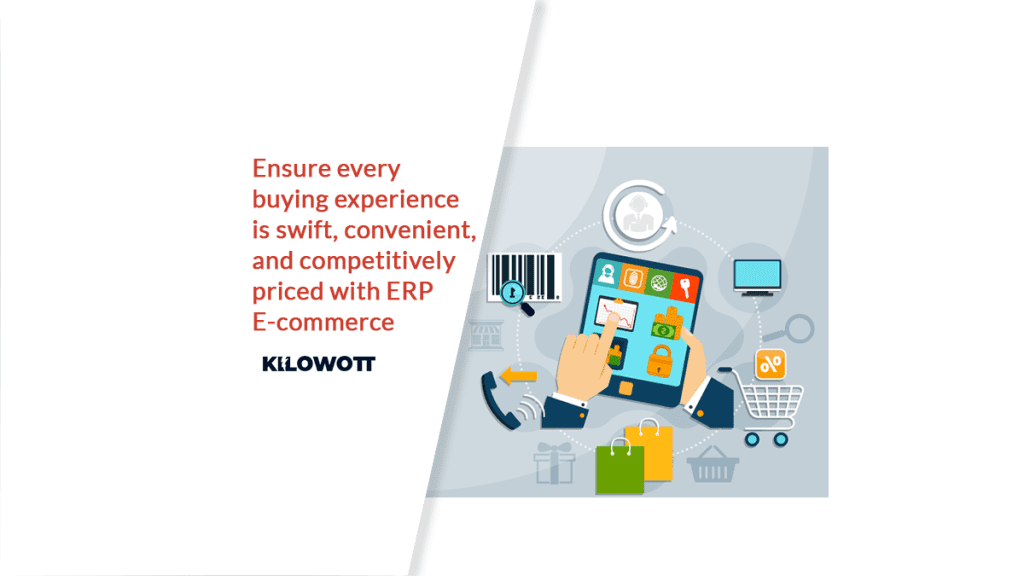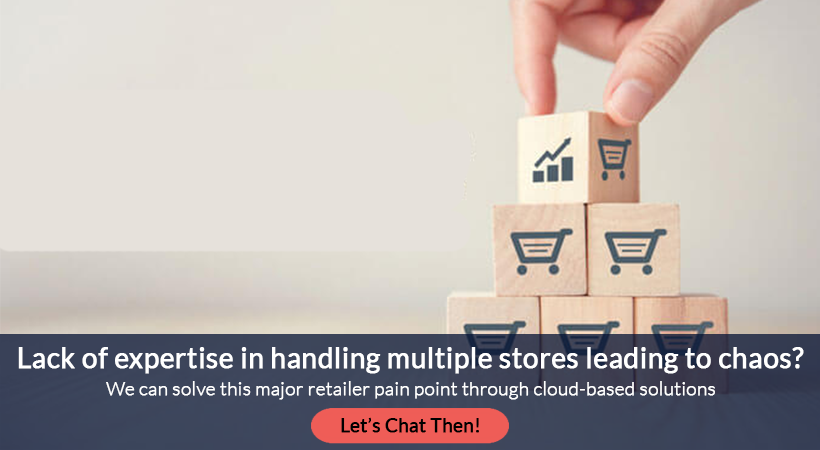How does it feel to contribute jet fuel to a section that is already exploding?
Take a look at the retail business, asks Doug Stephens, author of “Reengineering Retail: The Future of Selling in a Post-Digital World,” to get a sense of what’s going on.
He compared coronavirus to gasoline, citing Amazon and a few other companies as beneficiaries of a windfall.
Lockdowns, supply chain disruptions, and the necessity for social separation prompted retailers to respond quickly.
Self-checkouts, autonomous storefronts, virtual try-ons, and home delivery in under 15 minutes, as well as drone delivery and live broadcasting, were among their responses.
Which retail solutions are here to stay, and which are temporary patches? And which ones should be leveraged first to fully embrace the post-COVID reality? Maybe omnichannel solutions are one such alternative.
What is a omnichannel solution?
Omnichannel, also called omni-channel, is a multichannel sales strategy that aims to give customers a consistent buying experience regardless of whether they’re shopping online from a desktop or mobile device, over the phone, or in a physical store.
On the back end, an omnichannel approach means that distribution, promotion, and communication channels are all integrated.
A contemporary supply chain — one that extends distribution over mobile apps, websites, social media, and retail — is the key to a seamless omnichannel experience.
To get there, businesses must break down boundaries between online and physical locations and manage product responsibility as a single marketplace.
They also require new technologies, such as inventory management systems and new methods of product delivery.
What are the biggest retail trends or insights?
According to a Brightpearl survey titled “The State of Omnichannel,” 87 percent of retailers now feel that having an omnichannel strategy is a crucial business function. Customer lifetime value is increased, consumer spending is increased, and the purchase experience is improved with omnichannel retailing. Both shops and customers are enthusiastic about this completely integrated approach.
For years, the only true choice for shoppers who wanted to buy a product was to go to the retailer’s physical location, commonly known as brick-and-mortar stores, and purchase it there. As online shopping got more popular and accessible, a great number of retailers developed ecommerce sites in order to provide their customers with more buying options.
The beginning of multi-channel retail was having access to both digital and physical purchasing alternatives. Almost always, the online and offline purchasing experiences would be completely distinct.
Online orders would be purchased digitally and then shipped, whereas physical purchases would be made in stores. The introduction of online shopping signaled the start of multi-channel retail, giving shoppers more choices and better purchasing possibilities.
When you start looking into omnichannel commerce more deeply, you’ll notice a number of statistics that make a strong argument for this integrated and optimized method. Companies that use strong omnichannel engagement methods, for example, keep 89 percent of their clients. In comparison, only 33% of organizations with weak or non-existent integrated retail strategies achieve this level of success.
According to research published in the Harvard Business Review, the more channels a client uses while making a purchase, the more valuable they are to the business over time. Omnichannel shoppers, on average, spend 4% more each shopping trip than their mono-channel counterparts.
Businesses can benefit greatly from omnichannel retailing. Customers who have access to numerous shopping channels have more opportunities to make purchases and spend more money. Consumers who use four or more touchpoints to make a purchase pay an average of 9% more than those who just use one.
When compared to customers who only use one channel to make purchases, omnichannel shoppers might be worth up to 30% more to merchants over the course of their lifetime.
When searching to buy anything, people of all ages use both online and physical channels.
While baby boomers favor a more mono-channel approach to shopping, millennials are one of the groups most likely to shop across many channels. In fact, millennials today expect the convenience of an omnichannel strategy during their buying experience.
Why do businesses need omnichannel solutions?
Baby boomers and Gen X aren’t opposed to online buying; in fact, Gen X spends 50% more time (six hours) shopping online each week than their elders. People in these age groups, on the other hand, are more likely to make their final purchase in a physical store.
Due to their high level of customer service expectations, 84 percent of baby boomers prefer to acquire things in person. These generations are also more inclined to consult review sites and ecommerce sites before making a final purchase decision.
Because most generations are already accustomed to researching and purchasing things across a range of platforms, the transition to a fully integrated omnichannel strategy will be a natural development for customers of all ages.
This should instill more confidence in merchants when it comes to implementing an omnichannel strategy.
What are the opportunities in omnichannel solutions?
The consumer journey used to be brief and straightforward. Shoppers would place an order and pay for their purchase after discovering a product and engaging with a business. They would then pick up or have their goods delivered. However, things have changed in recent years. Customers today expect more choices at every step of the purchasing process.
In the year 2000, 66.2 percent of consumers utilized two or more touch points before completing a purchase, whereas only 7.3 percent used four or more touch points. The percentage of people who use three to seven touchpoints climbed to 74 percent in 2015.
A typical omnichannel customer journey today includes perusing a company’s website, visiting one of their physical locations, and conducting detailed product research through user reviews, apps, and social media. This investigation takes place prior to any transaction taking place.
The research stage of the customer journey is extremely crucial as we enter 2019. Before making a final decision, consumers will research several internet options such as social media networks, review sites, and ecommerce sites. Furthermore, 55% of customers plan to visit a physical store before making a purchase.
Customers had a much smoother and more efficient shopping experience when retailers transitioned from multi-channel retail to a more integrated omnichannel approach. From omnichannel retail to a fully functional omnichannel retail ecosystem is the next step on the journey.
Consumer spending is increased and the purchase experience is improved with omnichannel retailing. Learn how to navigate an omnichannel ecosystem that is interconnected. Data mining will fuel the future of multichannel retail.
Companies will be able to get the information they need to successfully sell their products and services, as well as provide shoppers with the seamless, integrated experience they demand, by utilizing what is known as ‘big data.’
Omnichannel retailing is a highly successful means of keeping consumers and increasing their lifetime value.
Adopting a fully integrated ecosystem would increase the convenience and personalization of omnichannel retail even more, and the benefits to a company will almost certainly be enormous.
According to research published in the Harvard Business Review, the more touchpoints a client utilizes, the more money they spend. Customers’ overall spending is likely to be higher if firms can keep them within their ecosystem, easily moving from touchpoint to touchpoint.
The key advantages of an omnichannel retail ecosystem for consumers will be enhanced convenience and customisation. Profits are projected to increase for firms. As a result, omnichannel payment solutions are becoming a hot topic among organisations all over the world.
When it comes to payment acceptance, an omnichannel strategy guarantees that customers have a wide range of options at the checkout.
Customers are increasingly expecting payment choices like PayPal, Apple Pay, Android Pay, and payment on collection in addition to traditional card payment methods. Customers should have access to all of these payment choices across all platforms, according to businesses.
This is critical for a successful omnichannel ecosystem implementation.
The ideal customer experience is one that is intuitive, effortless, and seamless. You may need to hire specialist IT help or consider redeveloping your ecommerce site to do this.
Having customers log in to your online business might be a smart method to keep track of their individual shopping habits.
This could also make it easier for you to recognize your consumers, so that when they contact you in person or over the phone, you have all of their information at your fingertips and can tailor their experience.
How can Kilowott’s omnichannel solutions garner increased revenue?
Customers anticipate at least some level of omnichannel availability while purchasing, both online and in person, and this is quickly becoming the standard.
You may begin to provide your clients with a better purchase experience and more informed, tailored interactions by working to develop and implement a thorough strategy.
Because omnichannel shopping is proving to be extremely popular among customers of all demographics, if effectively executed, your plan should result in increased revenues, increased customer loyalty, and a future-proof online and offline presence.
Kilowott can help you build retail holograms and a system for live streaming. Claude Nahon, President of Mood Media’s Europe Division says that such devices will soon be prevalent because of the relative ease of generating and installing holograms and augmented reality technology.
Customers will be able to try on items without having to undress thanks to holograms in changing rooms.
Shoppers will be able to utilize holographic technology to determine whether some meals contain substances to which they may be allergic.
Holograms can also help stores conserve space by eliminating the need for mannequins, shelves, and racks.
Virtual, eye-catching displays, as well as continually changing sale products in specific parts of the shop floor, will be possible thanks to technology.
If you chose a dress, for example, there will be a hologram image of a must-have accessory item that will go wonderfully with it.
To safeguard both employees and customers, we can build omnichannel solutions for contactless commerce and cashless transactions via self-service checkouts, online apps, QR codes, and pay-and-go technology.
Retailers looking to improve the speed and efficiency of their checkout procedures have found self-checkouts to be a boon.
Automated assistants have the ability to increase employee productivity, lower expenses, and improve customer happiness when properly implemented.
We develop technology that employs deep learning AI to consider hundreds of variables in real time, including size, type, brand, price, aggregate shopper data, individual customer preference, current inventory, and more.
This can help you ask your consumers if they want the replacement item or if they don’t, which is a crucial signal that’s given back into our learning algorithms to improve future recommendations’ accuracy.
AI provides merchants, retailers, and suppliers with a huge advantage in terms of optimizing their digital channels and supply alternatives.
Businesses can optimize their channel mix and hence better serve customers and cope with new demand constraints by utilizing AI to quickly and accurately exploit customer and supply chain data.
Let’s chat then. We are certain that our omnichannel solutions can reshape the future of retail through AR, VR, AIML and more.







